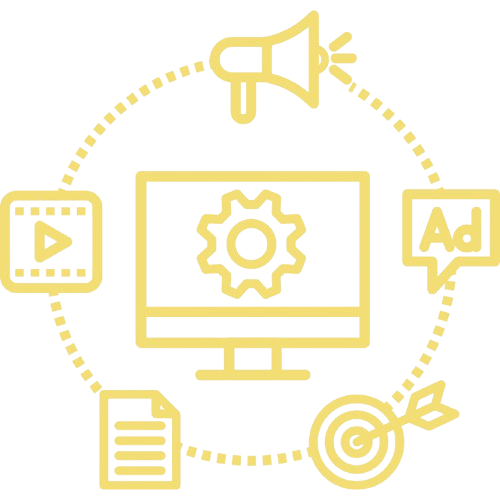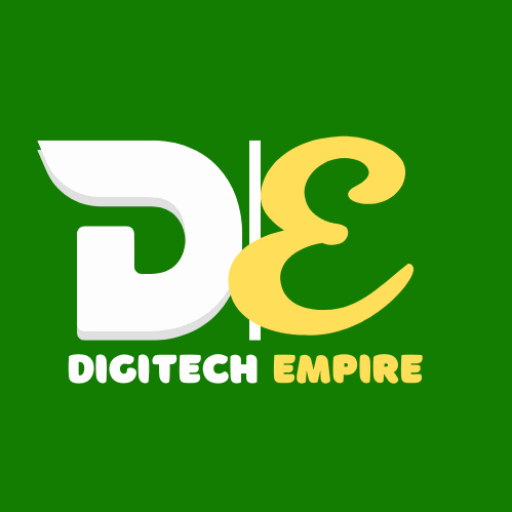What is Digital Marketing and How Does it Work

Digital Marketing is the practice of using digital media, platforms, and technologies to advertise and promote products or services to a focus audience. Digital marketing is different from conventional marketing, which exploits print media, television, or radio, in that it takes place in the virtual environment, hence being interactive and quantifiable.
Importance of Digital Marketing
Cost-Effective
Compared to traditional methods like print or TV advertising, digital marketing is often more affordable and provides a higher return on investment (ROI).
Targeted Reach
Digital marketing allows businesses to reach highly specific audiences based on demographics, interests, and behavior.
Measurable Reach
With tools like Google Analytics, businesses can track campaign performance in real-time, adjusting strategies for better outcomes.
Global Reach
With digital platforms, your business can target audiences not just locally but globally, without geographical limitations.
Key Elements of Digital Marketing
Digital marketing is a general term that encompasses different tactics and strategies. Let’s explore some of the most crucial elements:
1. Search Engine Optimization (SEO)
SEO refers to the process of optimizing your site so that it can rank higher on search engine result pages (SERPs), like Google. By adding important keywords, optimizing page speed, and making your site mobile-friendly, you can gain more organic traffic (free) from search engines.
2. Pay-Per-Click Advertising (PPC)
PPC is an internet advertising model in which the advertisers pay per click on their advertisement. It‘s a method of purchasing visits to your website instead of getting them organically. Google Ads and social media platforms such as Facebook Ads are the common places for PPC.
3. Social Media Marketing
Social networking sites such as Facebook, Instagram, LinkedIn, and Twitter provide businesses with a way to interact directly with their customers. Social media marketing entails developing content that speaks to your target market and publishing it in order to create brand awareness, generate leads, and close sales.
4. Content Marketing
Content marketing is about developing valuable, relevant, and consistent content to draw in and keep a clearly defined audience. This may be in the form of blogs, videos, infographics, or podcasts. The aim is to give useful information that solves your audience‘s problems and makes your brand a trusted source.
5. Email Marketing
Email marketing is still among the strongest ways to develop relationships with customers. By directly contacting your subscribers with targeted, tailored messages, you can encourage brand loyalty, advertise products, and drive repeat sales.
Affiliate marketing is where you collaborate with someone or a business (an affiliate) that offers your product or service for sale in exchange for a share of any generated sales. It is an affordable way to widen your reach with no initial cost.
7. Influencer Marketing
Influencer marketing takes advantage of the influence of people who have acquired a significant fan base or following online. By cooperating with influencers who represent your brand, you can reach their audience and earn credibility.
How Digital Marketing Works
Digital marketing functions by bringing businesses to their target audience with strategic and data-driven marketing. Here is a simple explanation of how it functions:
Find the Target Audience: Knowing your audience is fundamental in developing successful campaigns. Who are they? What do they like, and where do they go online?
Select the Right Platforms: Depending on your audience, choose the correct channels—SEO, social media, PPC, email, etc.—through which to access them.
Create Valuable Content: Build interesting, pertinent content that satisfies your audience‘s requirements, be it informative, entertaining, or promotional.
Drive Traffic: Utilize methods such as SEO, PPC, and social media marketing to direct traffic to your site or landing pages.
Convert Leads: Employ techniques such as lead generation forms, call-to-actions (CTAs), and email follow-ups to convert visitors into customers.
Measure and Optimize: Monitor campaign performance by analytics tools, enhance strategies, and optimize data-driven to deliver better results.
The Future of Digital Marketing
Digital marketing operates by linking companies with their desired audiences using strategic and data-driven campaigns.
Identify the Target Audience: Knowing your audience is the foundation of building effective campaigns. Who are they? What do they like, and where do they hang out online?
Select the Right Platforms: Depending on your audience, pick the right channels—SEO, social media, PPC, email, etc.—to reach them.
Create Valuable Content: Produce compelling, pertinent content that solves your audience‘s problems, whether educational, entertaining, or promotional.
Drive Traffic: Leverage strategies such as SEO, PPC, and social media marketing to drive traffic to your website or landing pages.
Convert Leads: Use strategies such as lead generation forms, call-to-actions (CTAs), and email follow-ups to convert visitors into customers.
Measure and Optimize: Monitor campaign performance using analytics tools, upgrade strategies, and optimize from data to enhance outcomes.
